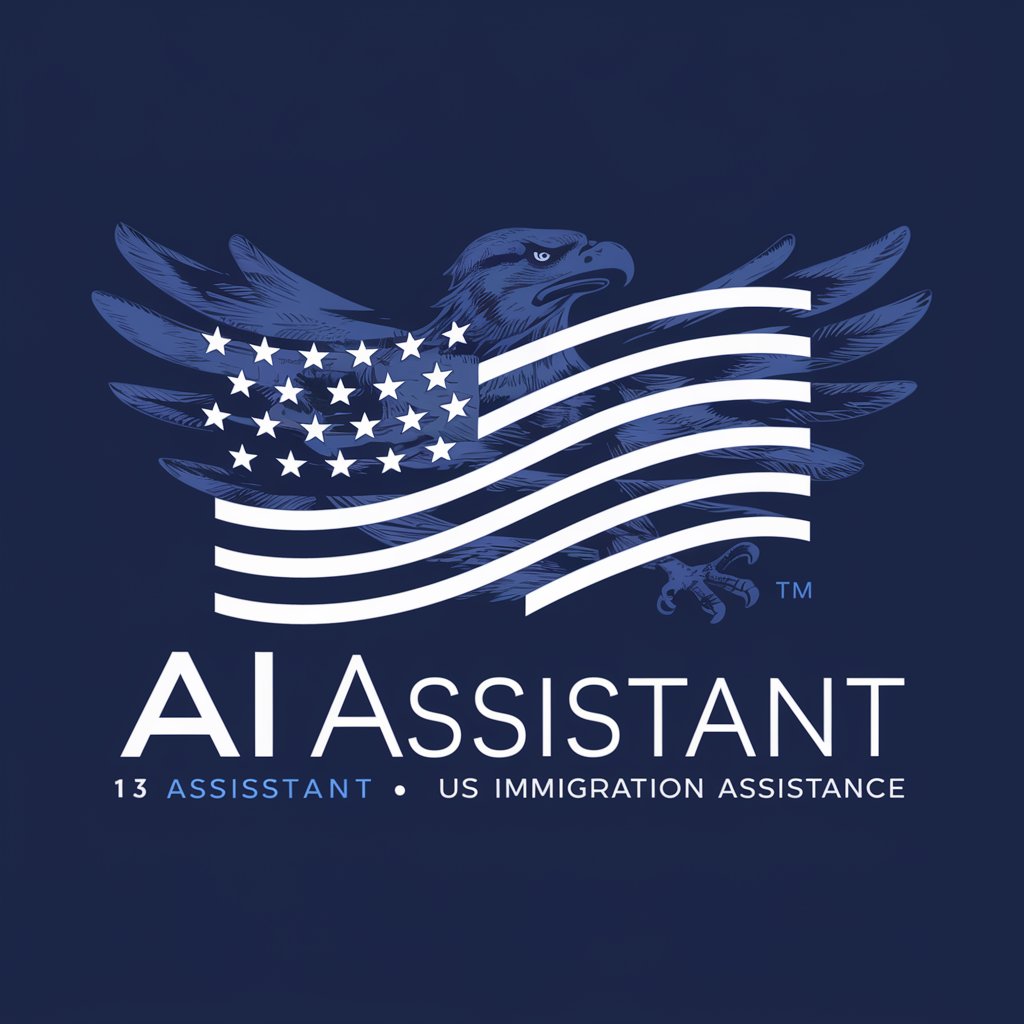8 GPTs for Immigration Law Powered by AI for Free of 2025
AI GPTs for Immigration Law are advanced AI tools based on Generative Pre-trained Transformers, specifically optimized for tasks and topics related to immigration law. These tools leverage natural language processing to understand and generate human-like text, providing tailored solutions for legal professionals, government agencies, and individuals seeking assistance in immigration matters. Their relevance lies in their ability to process complex legal information and offer accurate, context-specific guidance in this specialized field.
Top 8 GPTs for Immigration Law are: Lawyer Lexter (Norway),Client Evaluation Tool,H1B Visa Lawyer,O1 Visa Writer 2,US Immigration Assistant,Immigration Guide,Panama Legal en Español,Legal Eagle
Lawyer Lexter (Norway)
AI-Powered Norwegian Legal Guide

Client Evaluation Tool
Empowering Legal Decisions with AI

H1B Visa Lawyer
AI-Powered H1B Visa Assistance

O1 Visa Writer 2
AI-powered Visa Recommendation Crafting

US Immigration Assistant
Navigate US immigration with AI-powered precision

Immigration Guide
Navigating U.S. Immigration with AI-Powered Expertise

Panama Legal en Español
Empowering you with Panamanian legal knowledge.

Legal Eagle
Navigating French Law with AI

Key Characteristics of Immigration Law AI Tools
AI GPTs for Immigration Law are distinguished by their adaptability, offering a range of functions from basic information retrieval to complex legal analysis. Key features include sophisticated language processing capabilities, enabling them to understand and generate legal text accurately. They can analyze case law, interpret immigration statutes, and provide technical support. Additionally, their web searching and data analysis capabilities make them invaluable for staying updated with the latest legal developments and statistics in immigration law.
Who Benefits from Immigration Law AI Tools
The primary users of AI GPTs for Immigration Law include legal professionals like attorneys and paralegals, immigration policy makers, and students in the legal field. These tools are designed to be accessible to individuals without programming skills, offering user-friendly interfaces, while also providing advanced customization options for tech-savvy users. This accessibility ensures that a broad spectrum of users can leverage these tools for their specific needs in immigration law.
Try Our other AI GPTs tools for Free
Eligibility Criteria
Explore AI GPTs for Eligibility Criteria: revolutionary tools transforming eligibility assessment with precision, adaptability, and efficiency. Ideal for diverse users seeking streamlined, accurate eligibility determinations.
Process Overview
Explore AI GPTs for Process Overview: adaptable, powerful tools designed to optimize workflows and processes through advanced AI analytics and insights.
Nature Trips
Explore the great outdoors with AI-powered insights. Discover tailored travel guides, safety tips, and environmental education for your next nature trip.
Career Readiness
Explore AI GPTs for Career Readiness: your AI-powered companion for personalized career advice, resume tips, interview coaching, and more. Unlock your potential today.
Retail Marketing
Revolutionize your retail marketing strategy with AI GPTs – smart tools designed for dynamic customer engagement, market analysis, and personalized content creation.
Tech Promotions
Discover how AI GPTs for Tech Promotions revolutionize marketing in the tech industry, offering tailored content creation, market analysis, and engagement strategies.
Broader Implications of AI GPTs in Immigration Law
AI GPTs in Immigration Law represent a significant advancement in legal technology. They offer user-friendly interfaces that simplify complex legal analysis, making them suitable for various users. Their integration capabilities allow for seamless incorporation into existing systems, enhancing efficiency and decision-making in immigration-related matters. The adaptability of these tools makes them an invaluable asset in different sectors of the legal field, especially in navigating the complexities of immigration law.
Frequently Asked Questions
What exactly are AI GPTs for Immigration Law?
They are AI-based tools using Generative Pre-trained Transformer technology, specifically designed to assist with tasks and issues related to immigration law.
Can these tools interpret complex immigration laws?
Yes, they are equipped to understand and interpret complex legal texts, providing insights and guidance relevant to immigration law.
Do I need coding skills to use these tools?
No, these tools are designed for ease of use, catering to both non-technical individuals and those with programming expertise.
Can these tools stay updated with the latest immigration policies?
Yes, their web searching and data analysis capabilities enable them to stay informed with the most recent legal changes and updates.
Are these tools suitable for legal professionals?
Absolutely, they are particularly beneficial for legal professionals, aiding in research, case analysis, and understanding legal nuances in immigration law.
Can students use these tools for learning purposes?
Yes, they are a valuable resource for students studying immigration law, offering comprehensive information and analysis tools.
How do these tools handle language variations in legal texts?
They are equipped with advanced language processing capabilities, allowing them to understand and generate text in various legal terminologies and styles.
Can these tools integrate with existing legal systems?
Yes, they can be integrated with existing legal research systems and workflows, enhancing productivity and information accessibility.